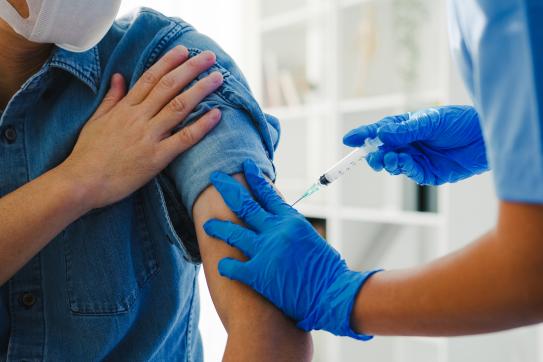Governments and businesses across the globe are searching for ways to increase COVID-19 vaccination rates. Despite widespread awareness and availability of vaccines, many developed countries are struggling to push vaccination rates beyond 70%. And in developing countries, vaccination rates are much lower. Is there a way to get the remainder of the world’s population vaccinated?
In “Monetary Incentives Increase COVID-19 Vaccinations,” published in Science, Chazen Senior Scholar Stephan Meier and colleagues from the University of Copenhagen, the University of Lausanne, the University of Zurich, the University of Chicago Booth School of Business, and Lund University show that paying people to get vaccinated actually works. Studying population-wide data from Sweden, researchers show that a modest monetary incentive moves the needle on vaccination rates, regardless of a person’s background.
How the Study Was Done
Some cities and countries around the world have started to offer monetary incentives, such as payments of $100 in New York and €150 in Greece, to encourage people to get vaccinated. The research of Meier and his coauthors is the first randomized controlled trial (RCT) to explore whether that type of incentive leads to an uptick in vaccination rates.
The researchers conducted the RCT with a general sample of the Swedish population, randomly placing participants into five different treatment groups and one control group. To study the impact of guaranteed payments on vaccination rates, a group of participants were paid SEK 200 (about $24 USD) if they were vaccinated within 30 days, which researchers verified using Swedish public health records. Researchers also studied the impact of three behavioral nudges on vaccination uptick:
- The first group of participants (referred to as the “social impact condition”) was asked to make a list of four people who would benefit from them getting vaccinated.
- The second group (referred to as the “arguments condition”) was asked to write down their best argument for convincing another person to get vaccinated.
- The third group (referred to as the “information condition”) was quizzed on information regarding the safety and effectiveness of COVID-19 vaccines.
A final group of participants was not provided with any incentives (referred to as the “no reminders condition”), which allowed researchers to study the impact of vaccine appointment information and reminders on vaccination uptick.
Researchers compared two outcomes: (1) participants’ self-reported intention to get a first dose of a COVID-19 vaccine within 30 days after vaccines became available to them and (2) whether participants were vaccinated within 30 days, according to administrative records for actual vaccinations collected by Swedish public heath authorities.
The Results
The research reveals that incentivizing people with even a modest amount of money to get vaccinated pays off. In fact, the data show that a one-time payment of SEK 200 for getting vaccinated within 30 days increased vaccination rates by 4.2 percentage points, from a baseline rate of 71.6%. This is a similar rate to other countries, which, researchers say, indicates that monetary incentives could drive up vaccination rates in these countries as well.
When it comes to non-monetary incentives, researchers find that while appealing to a person’s behavioral motivations for getting vaccinated increases stated intentions to vaccinate, it does not translate into actual vaccinations. Of the behavioral nudges studied, participants who expressed the most intent to get vaccinated were the ones who identified people who would benefit from their vaccination or an argument that would convince another person to get vaccinated. Neither of these nudges, however, significantly increased vaccination rates. In addition, reminders about vaccine appointments did not substantially drive vaccinate rates, contrary to prior research findings.
When analyzing individual characteristics of the participants studied, researchers found large baseline differences in vaccination uptick across sociodemographic groups. For example, people with a higher socioeconomic status (e.g., well-educated, higher income, employed) got vaccinated at a higher rate, which isn’t surprising. However, one might expect people in lower economic strata to respond in higher numbers to a monetary incentive. But that was not the case. No particular subgroup (e.g., male vs. female, rich vs. poor, risk tolerant vs. risk adverse) was more likely to get vaccinated when offered a guaranteed payment. Monetary incentives increased vaccination rates uniformly across all subgroups. According to researchers, this finding shows that monetary incentives have the potential to increase vaccination rates irrespective of a person’s background.
